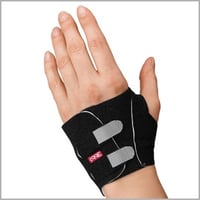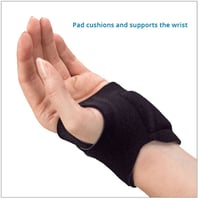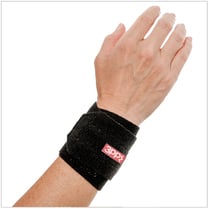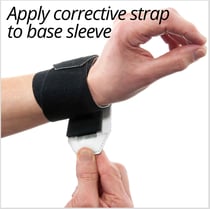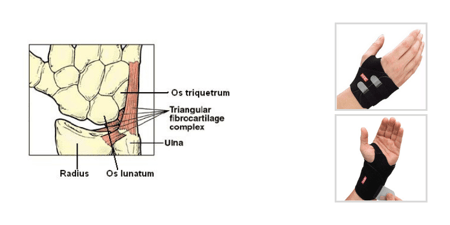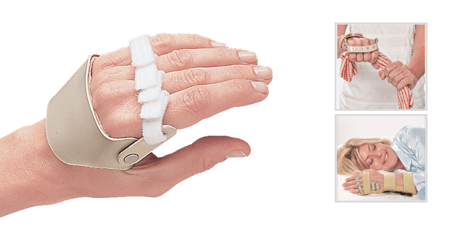Ulnar-sided carpal instability is a complex and often overlooked condition that can greatly affect wrist function and overall quality of life. It happens when the normal balance between the ulna and carpal bones is disrupted, often due to damage or weakening of key ligaments like the triangular fibrocartilage complex (TFCC), ulnocarpal ligaments, or intercarpal ligaments.
This condition can show up in different ways, such as instability between the ulna and carpus, issues with the lunotriquetral joint, or midcarpal instability. Patients often report ulnar-sided wrist pain, swelling, and mechanical symptoms like clicking or catching. They may also struggle with activities that involve rotation or bearing weight on the wrist.
Understanding how to assess these issues is important. Early detection and treatment can stop the condition from progressing to chronic pain or joint degeneration. Since these instabilities can be subtle, a thorough and systematic approach using multiple clinical tests is essential to making an accurate diagnosis and planning effective treatment.
Assessments for Clinical Evaluation of Ulnar-Sided Wrist Pain
1. Relocation Test
The relocation test combines carpal pronation with an anterior-to-posterior glide of the carpus on the ulna. It is used to address ulnocarpal instability, which can lead to volar sag and supination of the wrist, often caused by laxity or tears in the ulnocarpal ligaments or the triangular fibrocartilage complex (TFCC). A positive test is indicated when wrist pain decreases during the maneuver, suggesting improved alignment of the carpus.
This test is often used in conjunction with other stability tests, such as the ulnar variance test and the piano key sign, to assess for ulnocarpal instability. Treatment for this condition may include immobilization, physical therapy, or surgery depending on the severity of the injury.
2. Pisiform Boost Test
The pisiform boost test is performed by placing the wrist in passive ulnar deviation while applying volar pressure to the ulna and dorsal pressure to the pisiform. A positive result is identified by a reduction in pain, noticeable laxity, or a clicking sensation during the maneuver, which may indicate instability, injury, or pathology involving the ulnar wrist ligaments or other related structures. This test can be a valuable tool in diagnosing wrist conditions, particularly in cases of suspected ulnar-sided wrist pain or dysfunction.
| How to Treat TFCC - Symptoms & Causes of Ulnar Sided Wrist Pain- View Video |
3. Midcarpal Shift Test (also known as Catch-Up Clunk Test and Pivot Shift Test)
The midcarpal shift test is used to assess midcarpal instability, often caused by ligament laxity. To perform the test, place a volarly directed load on the capitate while applying an axial load and ulnarly deviating the wrist. A positive test is indicated by a painful clunk or the reproduction of pain.
Midcarpal instability typically results in a volar sag on the ulnar side of the wrist, accompanied by clunking during movement from radial to ulnar deviation. To conduct the test, position the hand in pronation and apply a downward (palmar) pressure on the capitate. Simultaneously, maintain axial traction on the hand while passively moving the wrist into ulnar deviation. The presence of a painful or audible clunk, or the reproduction of pain, confirms a positive result.
4. Ballotment Test for Lunate-Triquetral (LT) Instability
The ballotment test is used to assess instability in the LT joint, typically caused by ligament injury or laxity between the lunate and triquetrum bones. To perform the test, stabilize the lunate bone with one hand while applying alternating volar (palmward) and dorsal (backward) pressure to the triquetrum with the other hand.
The goal is to detect abnormal movement between these bones. A positive result is indicated by the presence of pain, a clicking sensation, or significant laxity during the maneuver. Such findings suggest potential ligament damage or dysfunction, which may require further diagnostic imaging or treatment to address wrist instability.
Comprehensive Treatment Approach
Effective Treatment Strategies for Ulnar Carpal Instability
Treatment depends on factors like instability severity, symptom duration, patient activity levels, and associated conditions. Conservative options should be tried first, progressing to minimally invasive or surgical treatments if necessary.
Initial Phase
Start by avoiding activities that stress the wrist, such as weight-bearing on extended wrists or repetitive motions. Anti-inflammatory treatments like NSAIDs, corticosteroid injections, or ice/heat therapy can help manage symptoms.
Comprehensive Rehabilitation Exercise Program
Rehabilitation should include:
- Strengthening exercises for the flexor carpi ulnaris, extensor carpi ulnaris, and hand muscles.P
- Proprioception training to improve joint stability.
- Range of motion exercises for flexibility.
- Functional training for specific activities.
Orthotic Management
Orthotic devices can stabilize the wrist and correct movement patterns:
If an ulnar carpal instability is detected with one of the above clinical evaluations, using the 3pp Carpal Lift or the 3pp Wrist POP Splint can assist ulnar wrist stabilization via providing a dorsal pressure to the ulnar head or a volar pressure to the ulnar carpus.
- The 3pp Carpal Lift incorporates a pad under the ulnar carpus and adjustable straps adding a dynamic lift without pressure on the ulna.
- The 3pp Wrist POP Splint has a corrective strap and pressure pads that allow the user to position force across the distal ulna and radius to restore stability for pain-free supination / pronation and wrist motion.
Both options provide symptom relief and therapeutic correction, aiding both acute and long-term management.
Assessing ulnar-sided wrist instability requires understanding wrist mechanics and applying diagnostic tests systematically. Early intervention with conservative measures, including orthotic devices like the 3pp Carpal Lift and 3pp Wrist POP Splint, can effectively manage symptoms and prevent progression. A tailored approach to evaluation and treatment is key for successful outcomes.


